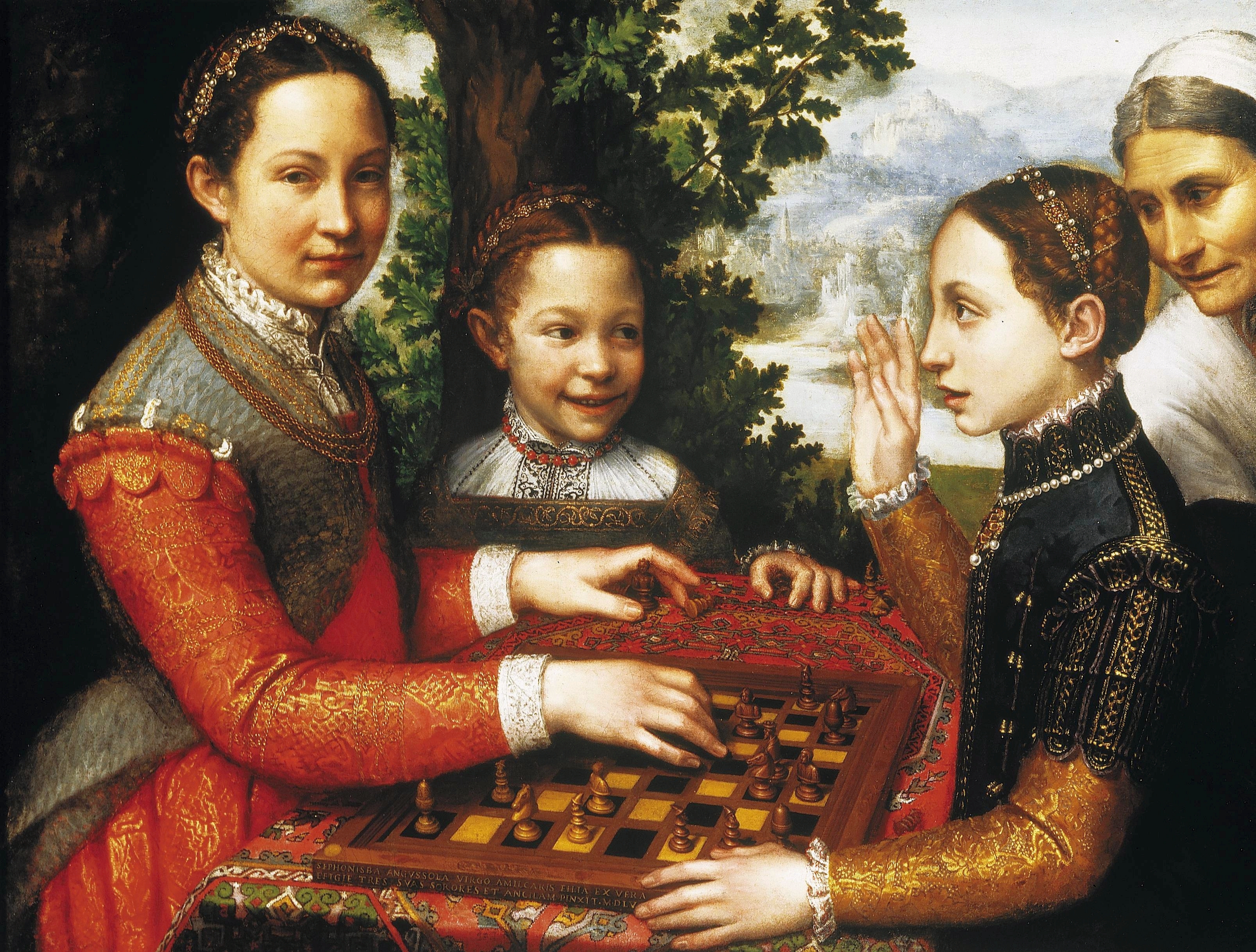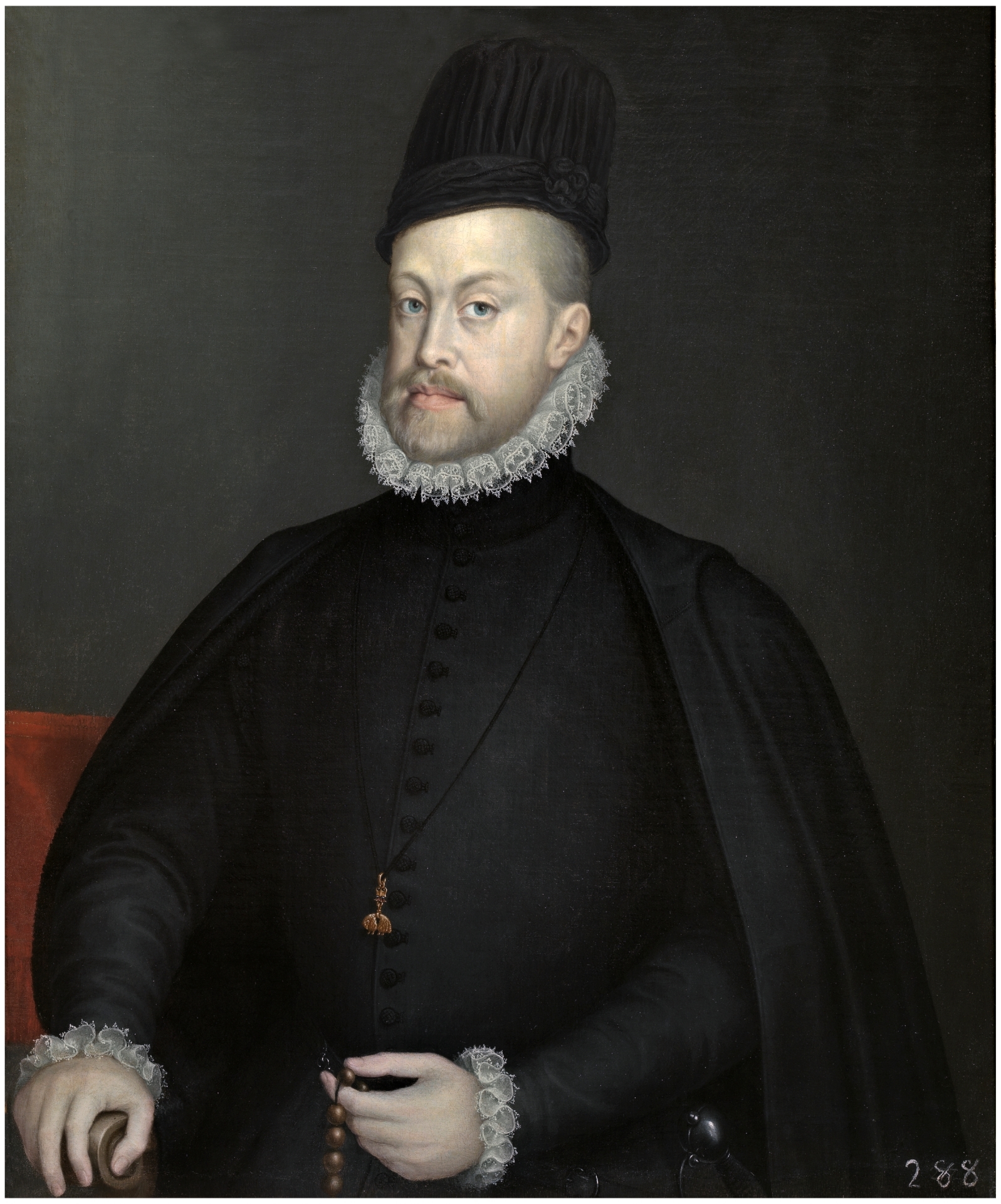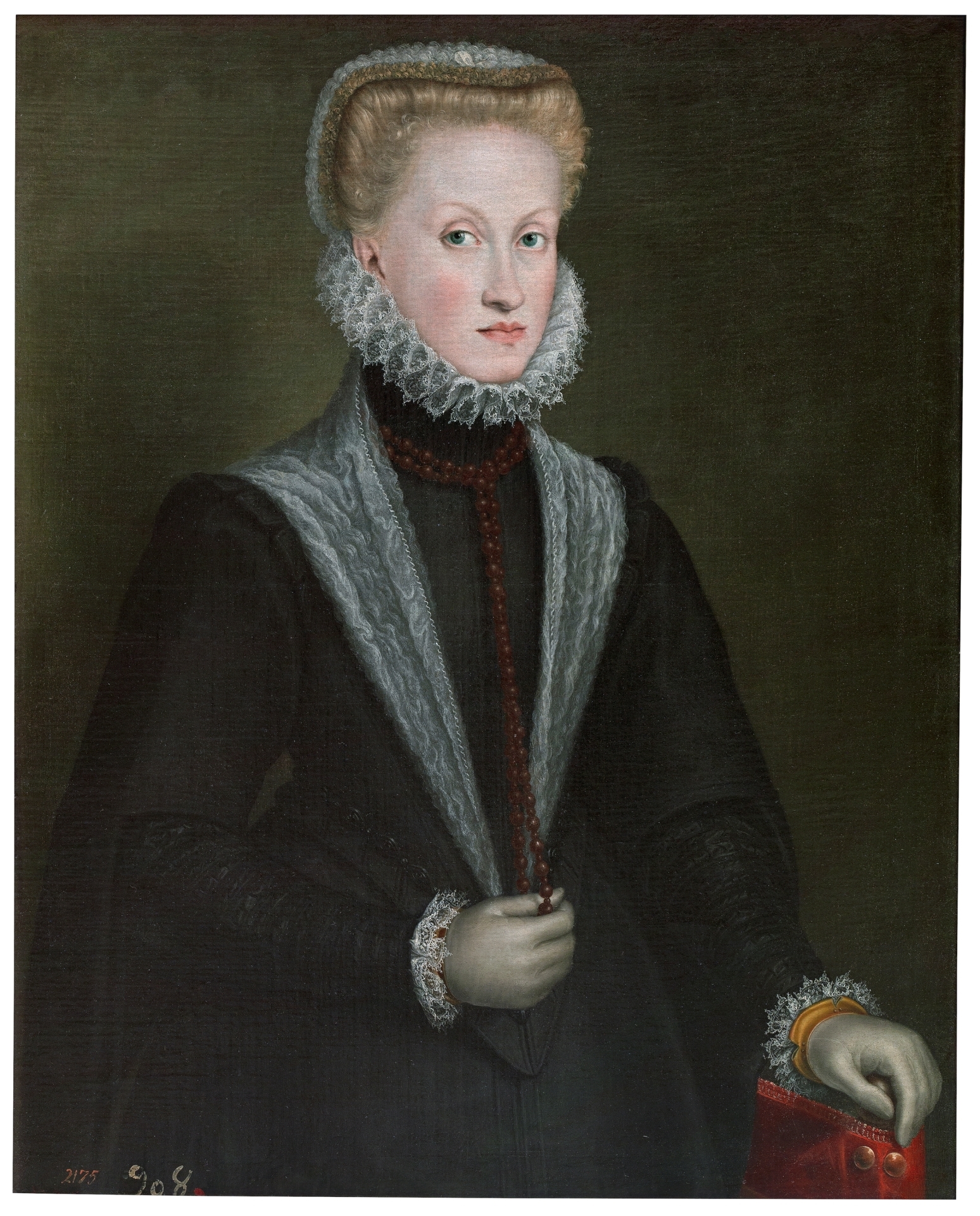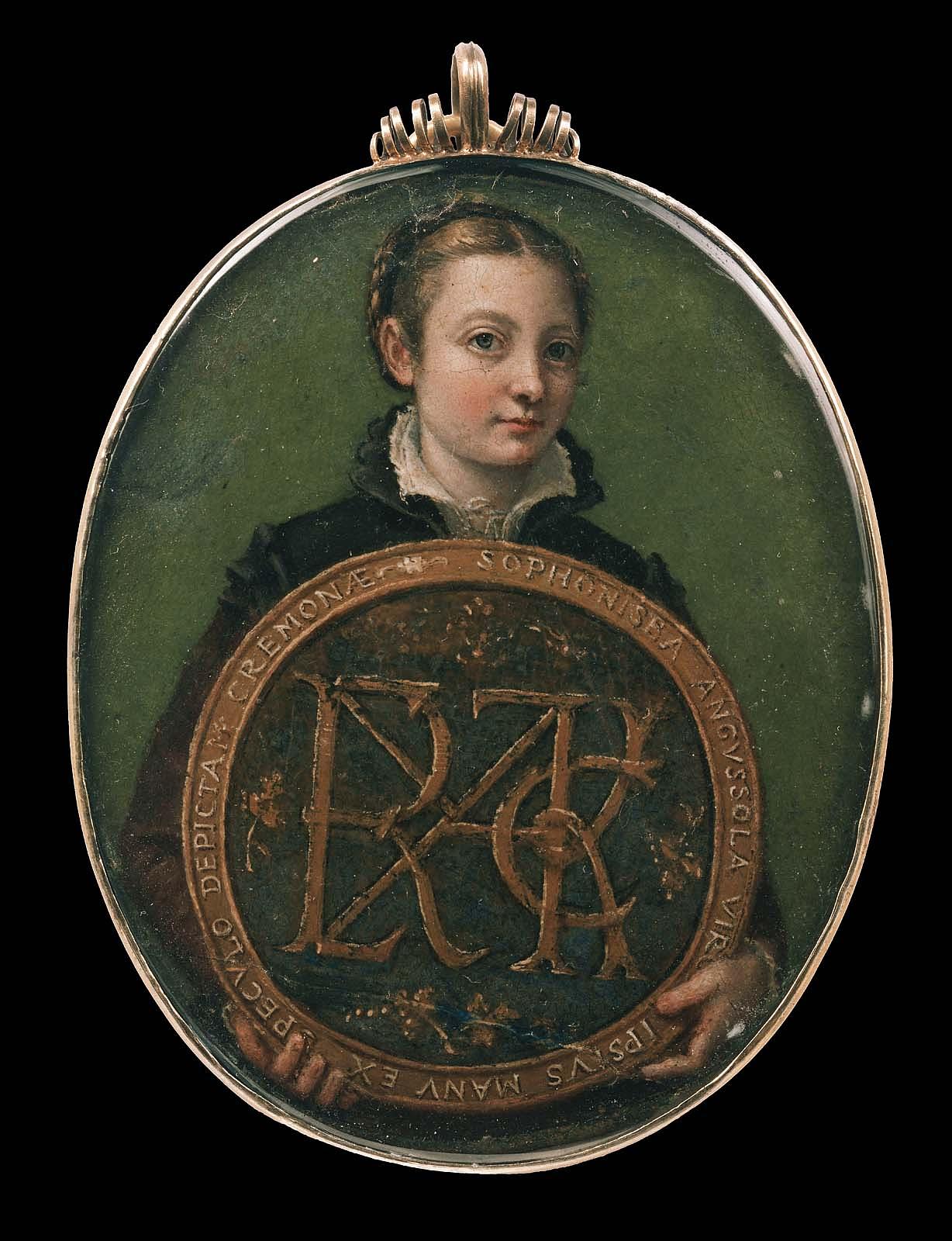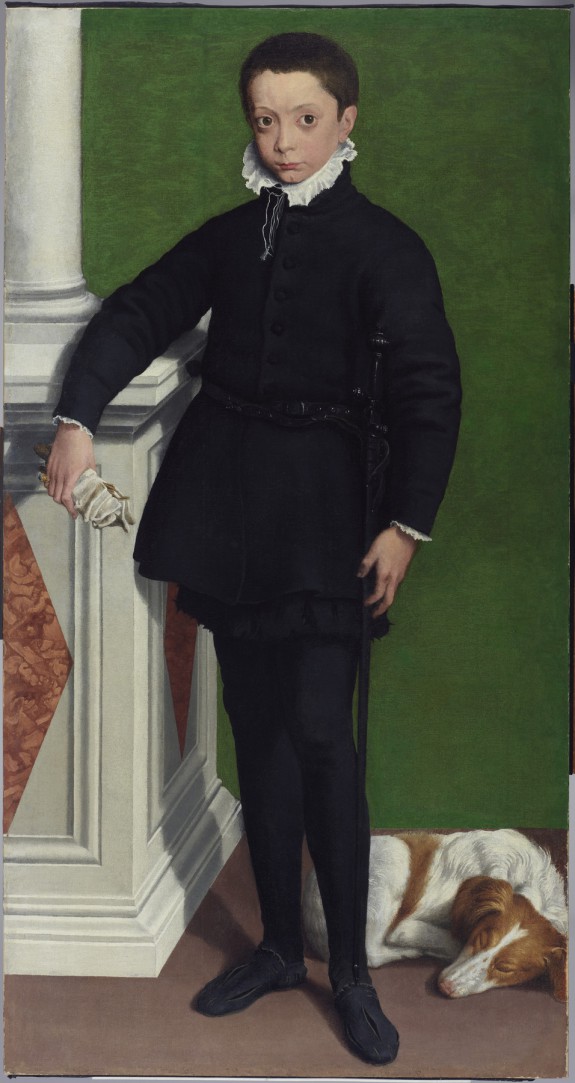Sofonisba Anguissola
Active in: Italy and Spain
Alternate names: Sophonisba Anguissola, Sophonisba Angussola, Sophonisba Anguisciola
Biography
Sofonisba Anguissola–painter, draftswoman, courtier at the court of King Philip of Spain, and teacher–has been called the first great woman artist of the Renaissance. The Milanese painter and writer Gan Paolo Lomazzo (1538–1592) called Anguissola’s portraits “miracles” that “astonished every prince and wise man in all of Europe.” The Florentine writer and painter Giorgio Vasari (1511–1574), who traveled to Cremona to see Anguissola’s paintings, praised her work in his Le Vite de’ più eccellenti pittori, scultori, e architettori. The admiration Anguissola inspired through her work became part of the epitaph her second husband, Orazio Lomellini, affixed to her tomb. His paean to Anguissola declared that, among her other virtues, she was “so outstanding in the representation of the human portrait that no one in her time was held in the same esteem.”
During her long career, which began around 1550 and ended with her failing eyesight in the 1620s, Anguissola specialized in portraits. She recorded the faces of her family and visitors to her home, others she met on her travels, and after 1559, when she became lady-in-waiting to Queen Isabel de Valois, members of the Spanish court. Many of Anguissola’s portraits of clerics, artists, humanists, nobles, and Spanish royals survive but the full scope of her work can only be pieced together by noting the many works (still to be found) mentioned by contemporary sources. Anguissola also painted sacred subjects, often depicting the Madonna and Child or Holy Family, some of which survive.
Anguissola’s career can be defined by six phases: her childhood, education, and artistic training (ca. 1532–50); her early career in Cremona (1550–59); her activity in the Spanish court (1559–73); her first marriage and their life in Palermo and Paterno (1573–ca. 1578); her second marriage and their life in Genoa (ca. 1579–1615); and the final years until her death in Palermo (1615–25).
For the first twenty-seven years of her life, Anguissola was based in Cremona, where she studied and produced art and built a growing reputation as an artist. She born into a noble family around 1532, the eldest of seven children. Four of her sisters–Elena, Lucia, Europa, and Anna Maria–also became painters. Several of the portraits and self-portraits she made during this early period of her career rank among her best known and most highly regarded works, many of which were part of her father’s campaign to educate and promote his daughters. Anguissola studied with both Bernardino Campi (1522–1591) and Bernardino Gatti (c. 1495–1576), better known as Il Sojaro. She also met and exchanged drawings with Michelangelo di Lodovico Buonarroti Simoni (1475–1564), who became a trusted teacher via their continued correspondence.
Anguissola’s fourteen years in Spain are well documented. In 1558, she became lady-in-waiting to Queen Isabel de Valois (1545–1568), the third wife of King Philip II of Spain (1527–1598). She later attended to Infanta Isabella Clara Eugenia (1566–1633) until Anguissola’s marriage to Fabrizio Moncada Pignatelli (d. 1578/79) in 1573. The match was arranged by King Philip II himself and accompanied by a large dowry.
Anguissola and Moncada left Spain in 1573 and lived Paterno and Palermo until his unexpected death in 1578 or 1579. It is unclear how much time Anguissola had to paint and what kind of work she created during this period; little of the work she produced during her five-year stay in Palermo has been identified. After her first husband’s death, Anguissola married Orazio Lomellino in 1584. For the next thirty, the couple lived together in Genoa, where Anguissola’s activities as an artist can only be traced by a few works, most of them religious in nature. No self-portraits can be securely placed in those three decades. In 1615, Lomellino relocated to Palermo, which became Anguissola’s home for the final decade of her life. By then she suffered from failing eyesight and had evidently stopped working, although acquaintances wrote that she kept a sharp mind until the end of her life. The young Flemish painter Anthony van Dyck (1599–1641) visited her in 1624 and made a portrait of her. Anguissola died on November 16, 1625, at the age of 93.
Selected Works
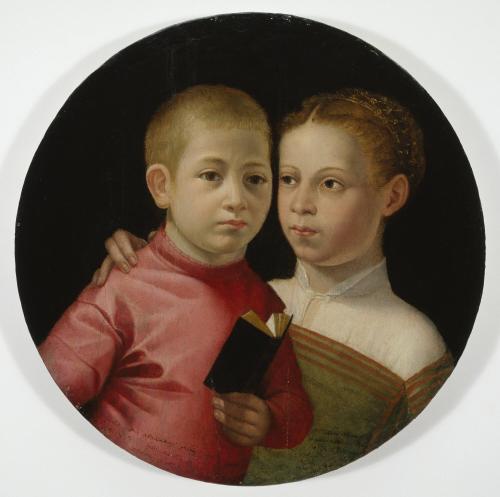
Sofonisba Anguissola, Double Portrait of a Boy and Girl of the Attavanti Family, 1580s. Oil on panel, 40 cm. Allen Memorial Art Museum, Oberlin College.
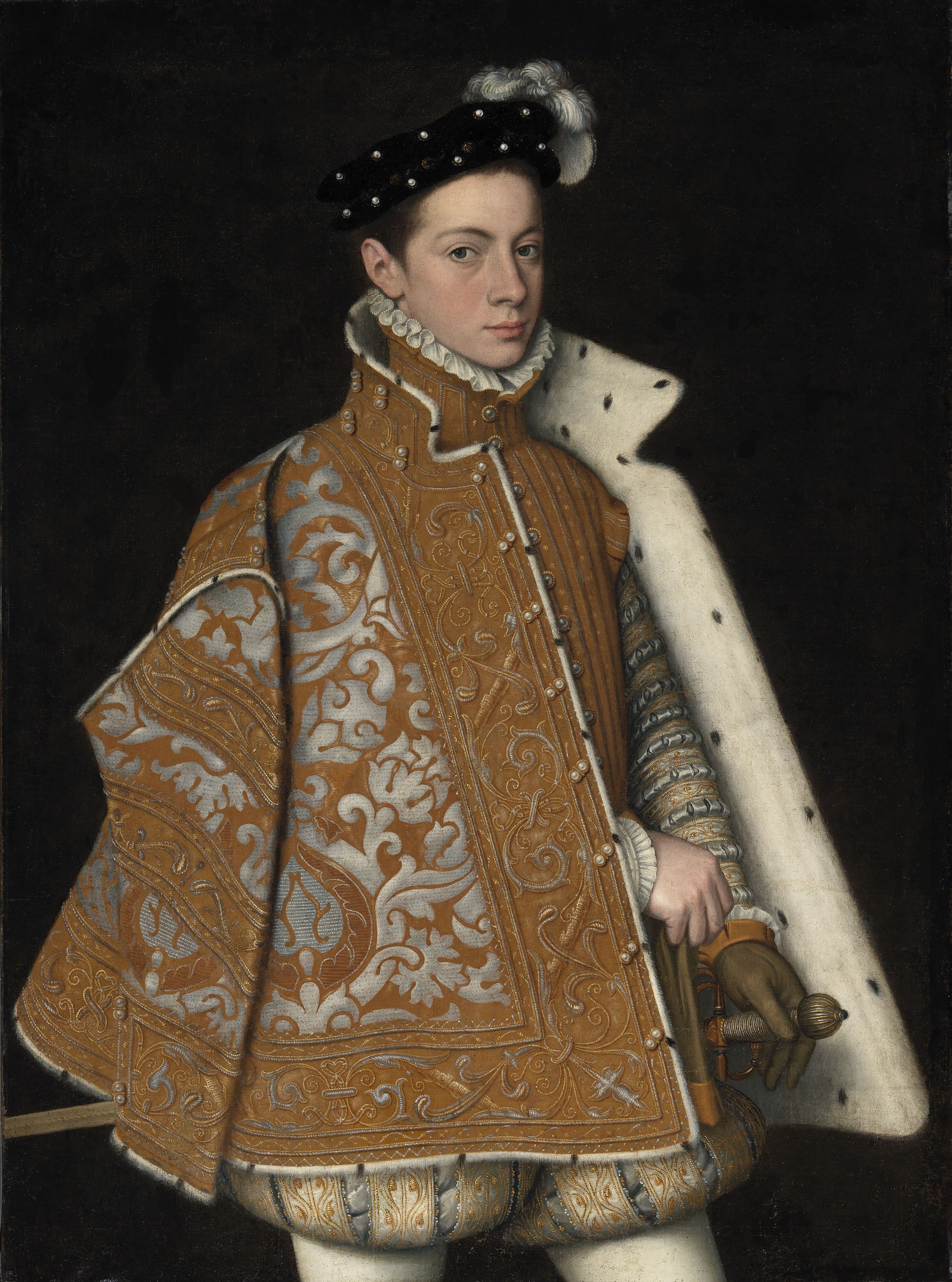
Sofonisba Anguissola, Portrait of Prince Alessandro Farnese, ca. 1560. Oil on canvas, 107 x 79 cm. National Gallery of Ireland, Dublin.

Sofonisba Anguissola, The Holy Family with Saints Anne and John the Baptist, 1592. Oil on canvas, 125.7 x 110.5 cm. Lowe Art Museum, University of Miami.

Sofonisba Anguissola, Juana of Austria and a Young Girl, 1561–62. Oil on canvas, 194 x 108.3 cm. Isabella Stewart Gardner Museum, Boston.
Circle
Wife of
Fabrizio Moncada Pignatelli (d. 1578/79)
Wife of
Orazio Lomellino
Sister and teacher of
Lucia Anguissola (ca. 1536 or 1538–ca. 1565–1566)
Sister of
Elena Anguissola (c. 1532–1584)
Sister of
Europa Anguissola (b. 1536)
Sister and teacher of
Anna Maria Anguissola (c. 1555–c.1611)
Sister of
Minerva Anguissola (c. 1539–1566)
Student of
Bernardino Campi (1522–1591)
Student of
Bernardino Gatti, Il Sojaro (c. 1495–1576)
Student and friend of
Michelangelo di Lodovico Buonarroti Simoni (1475–1564)
Acquaintance of
Anthony van Dyck (1599–1641)
Acquaintance of
Giorgio Vasari (1511–1574)
Lady-in-waiting for
Queen Isabel de Valois (1545–1568)
Attendant to
Infanta Isabella Clara Eugenia (1566–1633)
Bibliography
Ajmar-Wollheim, Marta, and Flora Dennis, eds. At Home in Renaissance Italy. London: Victoria and Albert Museum; New York: Harry Abrams, 2006.
Baldinucci, Filippo. Vocabolario toscano dell’arte del disegno. Florence, 1681.
Basile, F. Le rughe di Sofonisba. Palermo: Edizioni della Battaglia, 2004.
Borghini, Millo. Sofonisba: una vita per la pittura e la libertà. Milan: Spirali, 2006.
Borzello, Frances. Seeing Ourselves: Women’s Self-Portraits. New York: Harry Abrams, 1998.
Campi, Antonio. Cremona fedelissima citta. Cremona: In casa dell'istesso avttore, 1585.
Caroli, E. Anguissole e le sue sorelle. Milan: Leonardo d’Arte, 1987.
Caroli, Flavio, ed. L’Anima e il Volto. Ritratto e fisiognomica da Leonardo a Bacon. Milan: Electa, 1998.
Cavatelli, Ludovico. Annales. Quibus res ubique gestae memorabiles à Patria. Cremona, 1588.
Chadwick, Whitney. Women, Art, and Society. London: Thames and Hudson, 1990.
Cheney, Liana, Alicia Faxon, and Kathleen Russo. Self-Portraits by Women Painters. Brookfield: Ashgate, 2000.
Cole, Michael W. Sofonisba’s Lesson, A Renaissance Artist and her Work. Princeton, NJ: Princeton University Press, 2020.
Cook, Herbert. “More Portraits by Sofonisba Anguissola.” The Burlington Magazine 26 (1914–15): 228–36.
Dabbs, Julia K. Life Stories of Women Artists, 1550–1800: An Anthology. Burlington: Ashgate, 2009.
De Girolami Cheney, Liana, Alicia Craig Faxon, and Kathleen Lucey Russo. Self-Portraits by Women Painters. Aldershot: Ashgate, 2000.
De Nolhac, Pierre. “Les collections de Fulvio Orisini, Galerie de peinture au XVIe siècle.” Gazette des Beaux-Arts 29 (1884): 427–36.
Engert, E. Katalog der K.K. Gemälde Galerie in Belvedere zu Wien. Vienna: Kaiserlich-Königlichen Hof- und Staatsdruckerei, 1864.
Fine, Elsa Honig. Women and Art: A History of Women Painters and Sculptors from the Renaissance to the 20th Century. London: Allanheld & Schram, 1978.
Fornari Schianchi, Lucia, and Nicola Spinosa, eds. I Farnese: Arte e collezionismo. Milan: Electa, 1995.
Fortunati, Vera, ed. Lavinia Fontana, 1552–1614. Milan: Electa, 1994.
Fortunati, Vera, Jordano Pomeroy, and Claudio Strinati, eds. Italian Women Artists from Renaissance to Baroque. Washington, DC: National Museum of Women in the Arts, 2009.
Fortune, Jane, with Linda Falcone. Invisible Women: Forgotten Artists of Florence. Florence: Florentine Press, 2010.
Füssli, Johann Caspar. Geschichte der besten Künstler in der Schweiz nebst ihren Bildnissen. Zurich: Bey Orell, Gessner und Comp., 1770.
Garrard, Mary D. “Here’s Looking at Me: Sofonisba Anguissola and the Problem of the Woman Artist.” Renaissance Quarterly 47 (1994): 556–622.
Gómez, Leticia Ruiz. Tale of Two Women Painters: Sofonisba Anguissola and Lavinia Fontana. Madrid: Museo del Prado, 2019.
Gratiano, Guilio Cornelio. Di Orlando Santo vita, et morte con venti mila Christiani uccisi in Roncisualle Cavata del Catalogo de Santi. Venice: Ghirardo, & Iseppo Imberti, 1622.
Greer, Germaine. The Obstacle Race: The Fortunes of Women Painters and Their Work. New York: Farrar, Straus, Giroux, 1979.
Gregori, Mina, ed. I Campi e la cultura artistica cremonese del Cinquecento. Milan: Electa, 1985.
Gregori, Mina, ed. Sofonisba Anguissola e le sue sorelle. Milan: Leonardo Arte, 1994.
Gregori, Mina, and Andrea Bayer, eds. Pittori della realtà. Le Ragioni di una rivoluzione da Foppa e Leonardo a Caravggio e Ceruti. Milan: Mondadori Electa, 2004.
Heller, Nancy G. Women Artists: An Illustrated History. New York and London: Abbeville, 2003.
Hyde, Melissa. “‘Peintre par elle-même?’ Women Artists, Teachers and Students from Anguissola to Haudebourt-Lescot.” Arts et Savoirs 6 (2016): 1–19.
Jacobs, F. “Woman’s Capacity to Create: The Unusual Case of Sofonisba Anguissola.” Renaissance Quarterly 47 (1994): 74–101.
Jacobs, Frederika. Defining the Renaissance “Virtuosa”: Women Artists and the Language of Art History and Criticism. New York: Cambridge University Press, 1997.
King, C. “Looking a Sight: Sixteenth-Century Portraits of Women Artists.” Zeitschrift für Kunstgeschichte 58 (1995): 381–406.
Kühnel-Kunze, I. “Zur Bildniskunst der Sofonisba und Lucia Anguissola.” Pantheon 20 (1962): 83–96.
Kusche, Maria. “Comentarios sobre las atribuciones a Sofonisba Anguissola por el doctor Alfio Nicotra.” Archivo español de Arte, (2009): 285–36.
Kusche, Maria. “El retrato de D. Carlos por Sofonisba Anguissola.” Archivo español de Arte (2000): 385–94.
Kusche, Maria. Retratos y retratadores: Alonso Sánchez Coello sus competidores Sofonisba Anguissola, Jorge de le Rúa y Rolán Moys. Madrid: Fondación de Apoyo a la Historia del Arte Hispánico, 2003.
Kusche, Maria. “Sofonisba Anguissola Vuelta a Italia: Continuación de sus relaciónes con la corte Española.” Paragone 43 (1992): 3–34.
Kusche, Maria. “Sofonisba Anguissola en España.” Archivo español de Arte 62 (1989): 391–420.
Lamo, Alessandro. Intorno alla scoltura, e pittura. 1584. Appended to G. B. Zaist. Notizie istoriche de’pittori, scultori, ed architetti cremonesi. Cremona: Nella Stamperìa di Pietro Ricchini, 1774.
Lomazzo, Gian Paolo. Trattato dell’arte de la pittura di Gio. Paolo Lomazzo Milanese pittore. Diuiso in sette libri. Ne’ quali si contiene tutta la theorica, & la prattica d’essa pittura. Milan: Paolo Gottardo Pontio, 1584.
Longhi, Roberto. “Quesiti caravaggeschi: i precedent.” Pinacotheca 5–6 (1929): 258–320.
Morelli, Giovanni. Kunstkritische Studien über italienische Malerei. Vols. 1–3. Leipzig: Brockhaus, 1890–93.
Parker, Rozsika, and Griselda Pollock. Old Mistresses: Women, Art and Ideology. London: Routledge & Kegan Paul, 1981.
Pedretti, C. “Sofonisba: Filo indiretto con Leonardo.” Achad. Leonardo Vinci: J. Leonardo Stud. & Bibliog. Vinciana 8 (1995): 246.
Perlingheri, Ilya Sandra. Sofonisba Anguissola: The First Great Woman Artist of the Renaissance. New York: Rizzoli, 1992.
Pizzagalli, D. La Signora della Pittura: vita di Sofonisba Anguissola, gentildonna e artista nel Rinascimento. Milan, 2003.
Pomeroy, Jordana, et al. An Imperial Collection: Women Artists from the State Hermitage Museum. Washington, DC: National Museum of Women in the Arts, 2003.
Rocco, Patricia. “Maniera Devota/mano Donnesca: Women, Virtue, and Visual Imagery During the Counter-Reformation in the Papal States, 1575–1675.” PhD Diss., City University of New York, Graduate Center, 2014.
Sacchi, Federico. Notizie pittoriche cremonesi. Cremona: Ronzi, 1872.
Soprani,Raffaele. Le vite de’ pittori, scoltori et architetti genovesi. Genoa: Bottaro and Tiboldi, 1674.
Tufts, E. “Sofonisbla Anguissola, Renaissance Woman.” ARTnews 71 (1972): 50–53.
Vasari, Giorgio. Le Vite de’ più eccellenti pittori, scultori, e architettori. Florence: Appresso i Givnti, 1568.
Venturi, Adolfo. “Zur Geschichte der Kunstsammlungen Kaiser Rudolf II.” Repertorium für Kunstwissenschaft 8 (1885): 1–23.
Venturi, Adolfo. Storia dell’arte italiana. Vol. 9, La pittura del Cinquecento. Milan: Hoepli, 1933.
Vida, Marco Gerolamo. Cremonensium Orationes III adversus Papienses in controversia Principatus. Cremona, 1550.
Waagen, Gustav Friedrich. Treasures of Art in Great Britain: Being an Account of the Chief Collections of Paintings, Drawings, Sculptures, Illuminated Manuscripts, etc. London: John Murray, 1854–57.
Weidemann, Christianne, Petra Larass, and Melanie Klier. 50 Women Artists You Should Know. Munich: Prestel, 2016.
Welch, Evelyn. “Painting as Performance in the Italian Renaissance Court.” In Artists at Court: Image-Making and Identity: 1300–1550, edited by Stephen J. Campbell, 19–32. Chicago, 2004.
Wisener-Hanks, Merry E. Women and Gender in Early Modern Europe. 4th ed. Cambridge University Press, 2019.
Woods-Marsden, Joanna. Renaissance Self-Portraiture: The Visual Construction of Identity and the Social Status of the Artist. New Haven: Yale University Press, 1998.
Zaist, Giovanni Battista. Notizie istoriche de’ pittori, scultori, ed architetti cremonesi. Rome: Società Multigrafica, 1965.
Entry Notes
In memory of Ann Sanderson, Advisory Board member and supporter of women artists. Thanks to Ann the museum has a wonderful painting by a pioneering modern woman artist: Gabriele Münter, and so I dedicate to her memory this entry on a wonderful woman artist who helped pave the way.—Heidi Gealt
